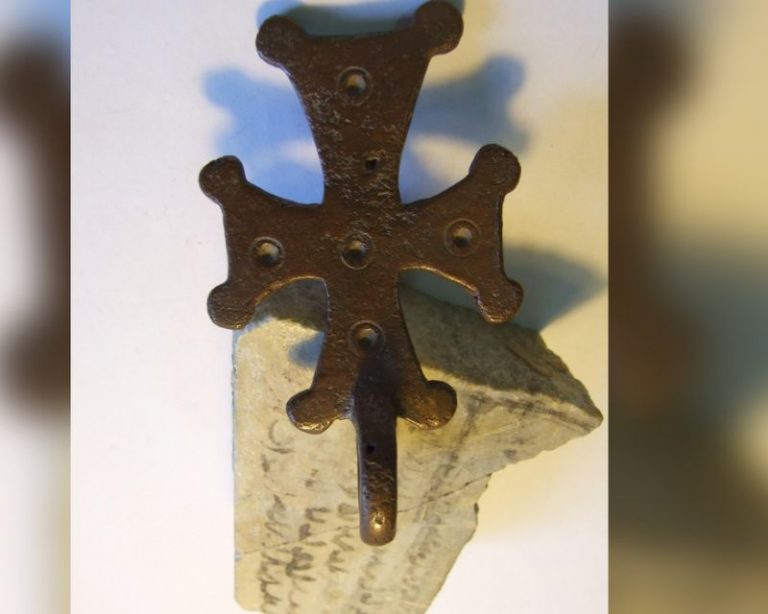The ancient desert village of Shivta in southern Israel made headlines when archaeologists discovered a wall painting there that is thought to show the baptism of Jesus Christ, the earliest representation of Christ known in Israel.
Now, they have found about 140 long-lost artifacts from the village, which showed up in an archive in Jerusalem, after they were left behind in a suitcase more than 80 years ago.
The artifacts from ancient Shivta, in Israel’s southern Negev Desert, were rediscovered last year, after researchers investigated a letter from a customs official about a “lost and found” suitcase left at the port of Haifa in 1938.
The researchers found that the suitcase had been filled with small items from archaeological excavations at Shivta in the 1930s. And they tracked down its contents to the shelves of a museum archive in Jerusalem, where they had been overlooked for decades.
The artifacts, which consist of small items like jewelry, door hinges, nails, pieces of glass, objects made from bone, ivory and wood, and shards of pottery inscribed with Arabic and Greek writing, are now on display at the Hecht Museum at the University of Haifa.
Most of the rediscovered artifacts are thought to date from Shivta’s Byzantine period, about 1,500 years ago.
Read more HERE
Ask me anything
Explore related questions





